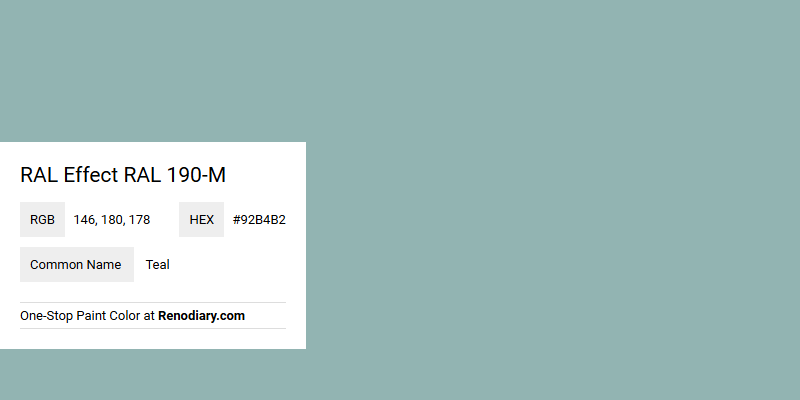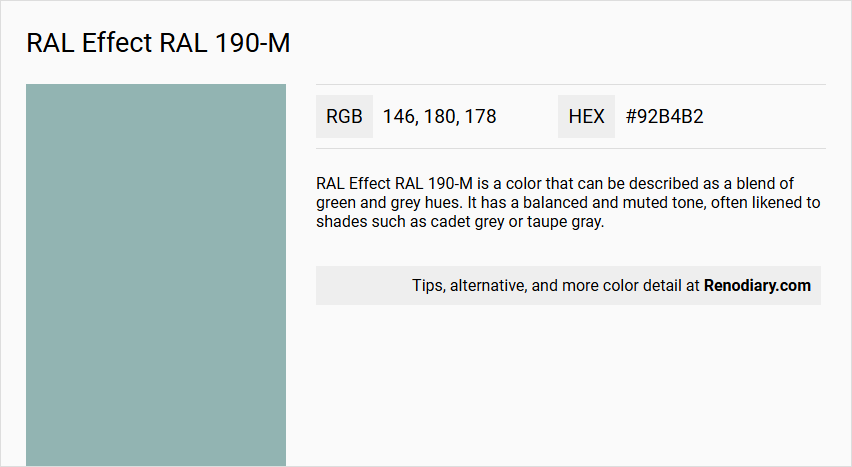
RAL Effect RAL 190-M, with its subtle blend of green and blue, is a sophisticated shade commonly recognized as Teal. This specific hue, defined by an RGB value of (146,180,178), encapsulates a serene balance ideal for interior designs that aim for a calm and modern aesthetic. Teal’s versatility as a color makes it a popular choice for both residential and commercial spaces, where it adds a touch of elegance and tranquility.
RAL Effect RAL 190-M Color Information
Color Description
RAL Effect RAL 190-M is a color that can be described as a blend of green and grey hues. It has a balanced and muted tone, often likened to shades such as cadet grey or taupe gray.
Undertones
The undertones of RAL 190-M are predominantly greenish-grey, with no strong lean towards red, blue, or yellow. This makes it a neutral and versatile color.
Color Values
- HEX: #8FB5B4
- RGB: 143, 181, 180
- CMYK: 54, 5, 35, 13
- HSL: 178deg, 21%, 71%
Usage
RAL 190-M is commonly used in various design contexts, including:
- Vehicle design: It can be used for car interiors and exteriors.
- Interior design: Suitable for walls, furniture, and decorative elements.
- Fashion: Can be used in clothing and accessories.
- General design: Often paired with colors like Onyx, Rifle green, Taupe gray, Medium jungle green, and Ash grey to create balanced and harmonious palettes.
Atmosphere
The color RAL 190-M creates a calm and balanced atmosphere. It is neutral and soothing, making it ideal for spaces where a serene and natural ambiance is desired. The greenish-grey tone can evoke feelings of stability and harmony.
RAL Effect RAL 190-M Color Alternative
RAL Effect RAL 190-M has several prominent alternatives available in the market that provide a distinct yet comparable visual appeal. Tikkurila V438 offers a nuanced approach to color design, while Dulux Rosemary Leaf 50GG 40/064 and Dulux Sea Urchin 3 90GG 40/115 present complementary options that cater to varied aesthetic preferences. These choices ensure that designers and architects can maintain consistency in style while exploring alternative palettes for creative projects.
Bathroom

For bathrooms, RAL 190-M offers a balanced ambiance by reflecting a moderate amount of light, ensuring the space remains comfortably lit without being overly bright or dim. It is advisable to consult a physical color fan rather than relying on digital screens, as on-screen representations could differ from the true appearance in the room.
When applying this hue, ensure thorough surface preparation and the use of a suitable primer, as different substrates may react uniquely. Additionally, testing the color in the specific bathroom environment under various lighting conditions will help confirm that it meets your expectations before finalizing the decision.
Bedroom
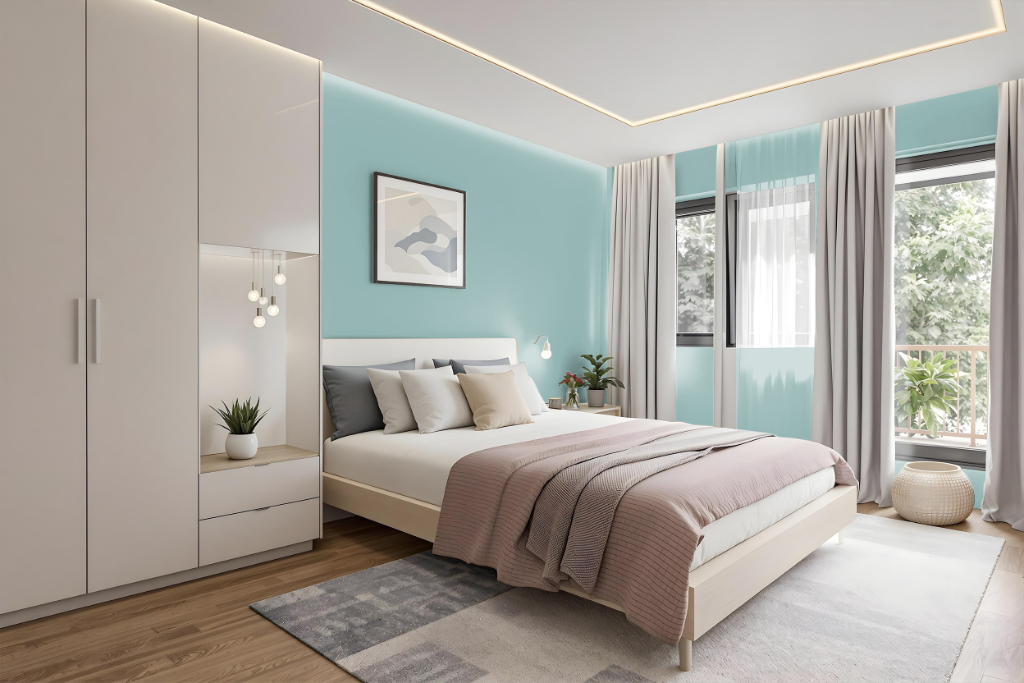
For a bedroom color scheme featuring RAL Effect RAL 190-M, this unique metallic finish can be gracefully integrated with complementary tones to craft an inviting and balanced environment. Soft pastels like light blues and pale greens create a calming atmosphere, while richer hues such as dark greens and charcoal grays impart an air of sophistication.
Adding neutral shades like beige or cream alongside natural materials and varied textures further enhances the room's overall elegance, ensuring that the metallic accent remains a striking focal point within a harmonious design.
Kitchen
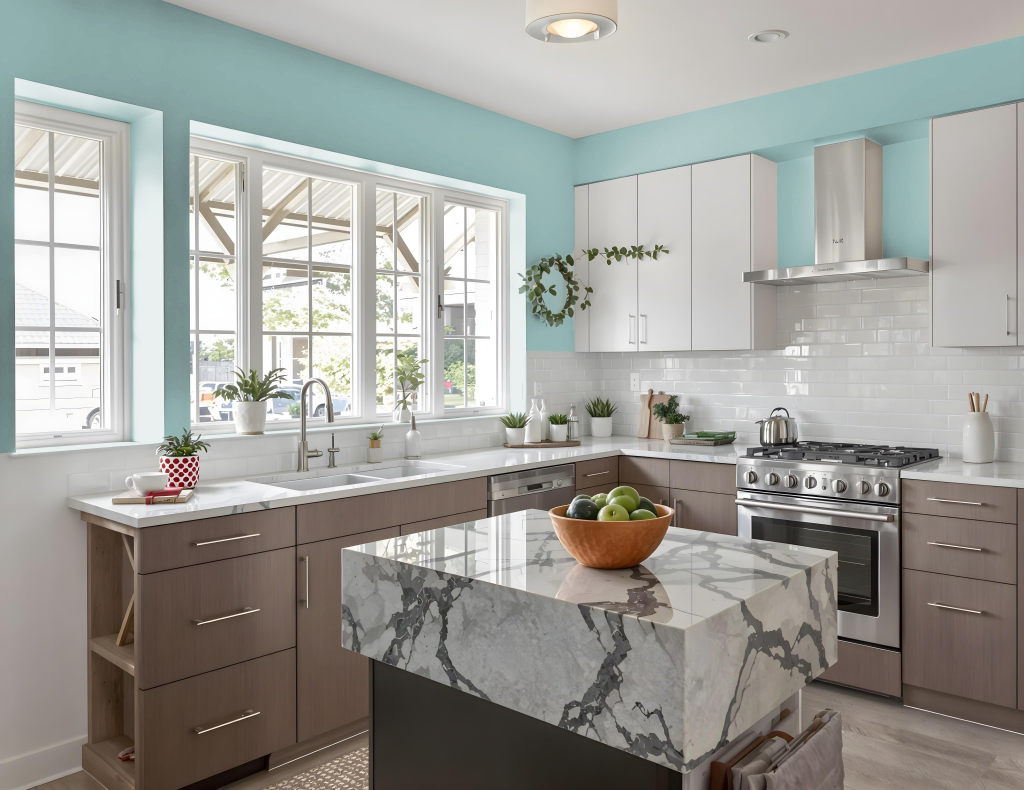
In a kitchen color scheme, RAL Effect RAL 190-M sets a distinctive tone that can lend a subtle yet unique touch when applied to cabinets, countertops, or walls. Its grounding aspect makes it an excellent match for neutral shades like ash grey, taupe grey, and onyx, ensuring that accent features or complementary elements blend seamlessly throughout the design.
For a more vibrant vibe, combining this color with earthy tones such as medium jungle green and rifle green creates a harmonious and natural ambiance. The ability to pair it with diverse materials—whether wood or metal—further reinforces the kitchen's overall aesthetic and design cohesion.
Living Room
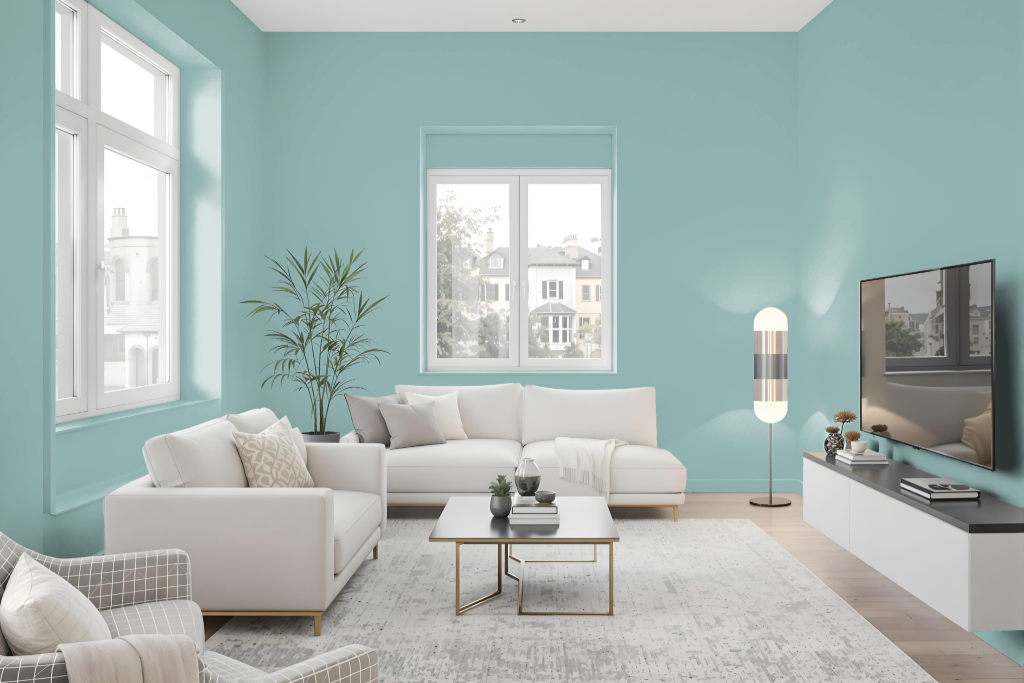
For living room design, RAL 190-M introduces a unique option with a balanced light reflectivity that suits varied interior settings. Its medium light reflectance helps create a well-lit atmosphere, while its appearance adapts significantly depending on the ambient lighting and surface types present.
When planning an application, it is important to consider that the color’s effect may vary on different substrates such as textured walls versus smooth cabinetry or furniture. Evaluating a tangible color fan sample is highly recommended for ensuring accurate color matching, as digital depictions might not fully capture its true character.
Outdoor
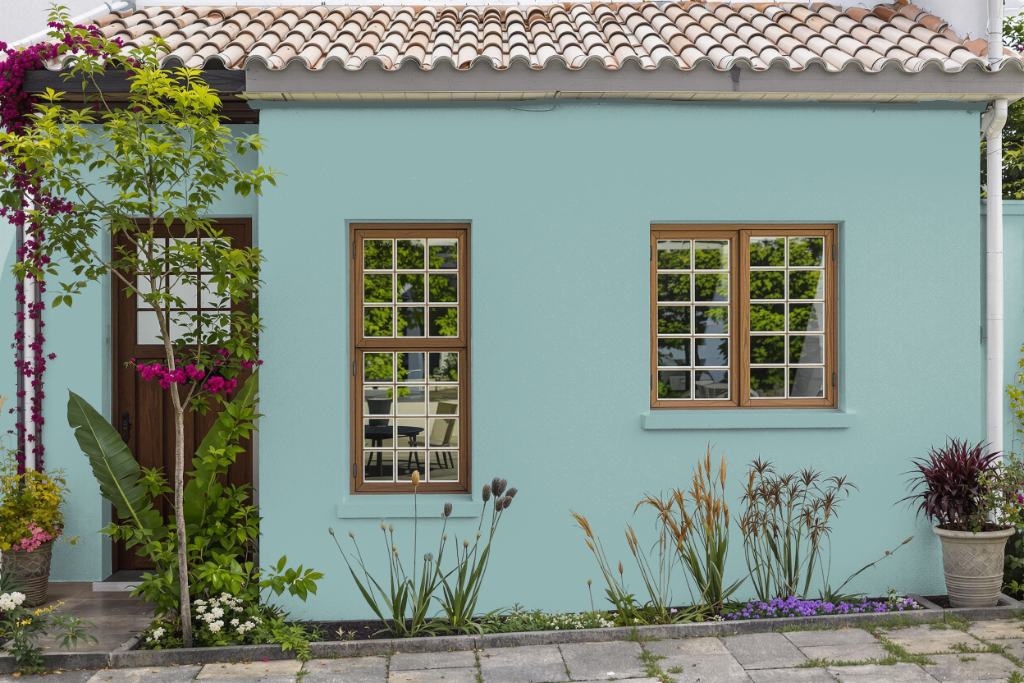
Home outdoor color RAL Effect RAL 190-M is a metallic finish that may not provide the desired performance for exterior applications. Its actual appearance is best evaluated using physical color samples rather than digital displays, which might not accurately reflect its true attributes.
When selecting paint for outdoor areas, it is important to opt for formulations specifically designed for exterior environments. Such coatings ensure higher durability and better resistance to moisture and UV exposure, offering improved longevity for home exteriors.
